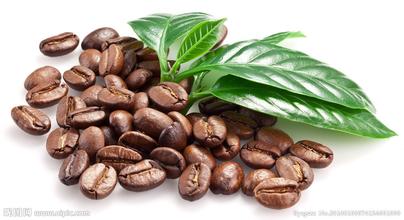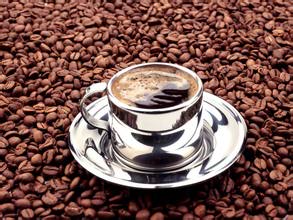Description of Coffee Flavor in Incht Manor, Guatemala; introduction to the taste of varieties in producing areas
In 1982, the leftist guerrillas across the country merged to form the "National Revolutionary Alliance of Guatemala" and armed struggle spread throughout the country. Farmers dissatisfied with the overthrow of the Arbens regime organized a guerrilla group in which more than 100,000 people were killed and millions displaced. In September 1982, the persecution of the local Mayans by the Guatemalan army was close to genocide, and more than 9000 Mayans were killed. Since 1983, persecution on the part of the Government of Guatemala began to decrease and the country began to democratize again. However, the disparity between the rich and the poor has not been solved, and only a small number of people who account for 1% own more than 60% of the arable land and wealth. In 1985, Guatemala reorganized the general election. [7]
In December 1996, the government of Arzu (National Vanguard Party) and the National Revolutionary Union of Guatemala reached a final peace agreement, which officially ended 36 years of civil strife in Guatemala. [1]
In 1996, the 36-year guerrilla war ended by signing a peace treaty. [7]
In the general election in Guatemala on November 9, 2003, Oscar Berhe, the candidate of the National Grand League, was elected president, and the National Grand League is the most powerful party in Congress. The participation rate is 54.5%. [7]
On September 9, 2007, presidential and congressional elections. Otto Perez Molina and Alvaro Colom entered the second round of voting in the presidential election. At 10:00 that evening (local time), the Central Election Commission announced that Colom had won by 5.4%, becoming Guatemala's first left-wing president in 53 years.
On November 6, 2011, in the second round of voting in the general election in Guatemala, Otto Perez Molina, on behalf of the Patriotic Party, defeated LIDER member Manuel Baldison with 54.48% of the vote, becoming the 48th president of Guatemala.
Guatemala is bordered by Mexico to the north and El Salvador and Honduras to the south. Guatemala produces about 3.5 million bags of coffee each year, and raw coffee beans account for 40 per cent of the country's total agricultural exports. This country, which mainly grows and exports coffee, has fertile soil suitable for coffee trees, suitable climate, abundant water resources and high altitude planting height. There are also many well-known producing areas in its territory, such as Antigua, Vivette Nanguo, Koban, Alcatel Nanguo, Attland, New Oriental, St. Marks and so on. Vivette Nango and Antigua are best known to coffee lovers.
"Huehuetenango" is translated as "Vivetta Nanguo" in Chinese. Whether in reading or in writing, the name sounds so good that it reminds me of the narino producing area of Colombia. A beautiful name, of course, must be matched with a beautiful flavor.
Vivette Nan Fruit is located in the highlands of northwestern Guatemala, growing at an altitude of 1800-2100 meters. It is the highest coffee-producing area in the country and is famous for producing high-quality beans. Due to the large number of rivers and lakes in Guatemala, the Vivette Nanguo region is rich in mountains and water resources, dry climate but abundant water resources, and complete water conservancy facilities in the region, coffee is mostly washed and processed. Vivette Nanguo coffee, rich taste, with a high mellow thickness, smoky taste is its most distinctive flavor.
Generally speaking, Arabica coffee grows at an altitude of about 2000 meters, while Robusta grows at an altitude of about 900m. If the altitude is too high, the coffee tree will frost because the temperature is too low, and even can not survive. And Vivette Nanguo coffee even if planted in the highlands of nearly 2000 meters above sea level, it is not easy to appear frost phenomenon, high but not cold growth environment has created high-quality extremely hard beans. This is entirely due to the warm, dry air blowing from the plains of Mexico, which protects the coffee trees from frost.
Like Costa Rica, El Salvador, Mexico, Honduras and other Central American countries, Guatemala's classification is based on altitude. Coffee produced at high altitudes is generally of higher quality than at lower altitudes, because the higher the altitude, the lower the temperature. At high elevations, the slower the coffee grows, the more beneficial it will be to the accumulation of good substances. That's why there is a way to classify quality by altitude. So what is the grading method based on altitude? Let's take Guatemala as an example. The higher the altitude, the higher the density of coffee beans and the higher the grade of raw coffee beans:

Important Notice :
前街咖啡 FrontStreet Coffee has moved to new addredd:
FrontStreet Coffee Address: 315,Donghua East Road,GuangZhou
Tel:020 38364473
- Prev

Introduction to the flavor description method of La Tisa Manor in Guatemala
Antigua coffee is popular with most coffee lovers only because of its distinctive aroma. Because it is planted in the hills of volcanoes, it can retain its own characteristics more than Costa Rica, the main reason is that it has more geographical and climatic advantages than Costa Rica. Guatemala is located in the tropics, but because of its high altitude, Qi
- Next

Description of Coffee Flavor in Berman Manor in Kenya; introduction to the taste of varieties in producing areas
Guatemala is a multi-party, independent democratic republic. The Constitution promulgated on 15 January 1986 provides for the separation of legislation (the Guatemalan Congress), law enforcement (the President and Vice-President) and the judiciary (the Supreme Court), belonging to the system of separation of powers. Congressional and presidential elections are held every four years, and all citizens over the age of 18 have the right to vote, while soldiers do not have the right to vote. Congress orders the most
Related
- Does Rose Summer choose Blue, Green or Red? Detailed explanation of Rose Summer Coffee plots and Classification in Panamanian Jade Manor
- What is the difference between the origin, producing area, processing plant, cooperative and manor of coffee beans?
- How fine does the espresso powder fit? how to grind the espresso?
- Sca coffee roasting degree color card coffee roasting degree 8 roasting color values what do you mean?
- The practice of lattes: how to make lattes at home
- Introduction to Indonesian Fine Coffee beans-- Java Coffee producing area of Indonesian Arabica Coffee
- How much will the flavor of light and medium roasted rose summer be expressed? What baking level is rose summer suitable for?
- Introduction to the characteristics of washing, sun-drying or wet-planing coffee commonly used in Mantenin, Indonesia
- Price characteristics of Arabica Coffee Bean Starbucks introduction to Manning Coffee Bean Taste producing area Variety Manor
- What is the authentic Yega flavor? What are the flavor characteristics of the really excellent Yejasuffi coffee beans?

